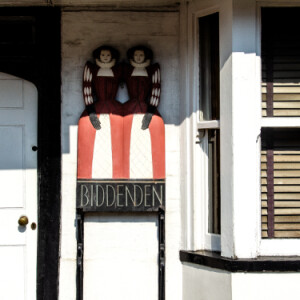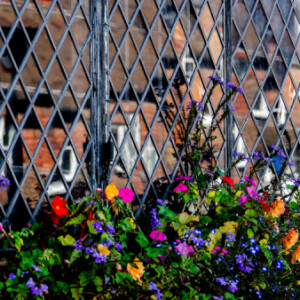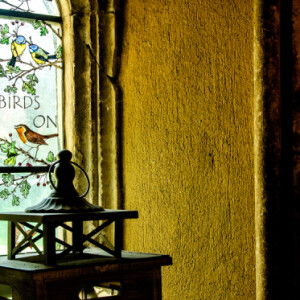Doing Biddenden's Bidding
Today after our usual early morning run we decided we would reinstigate our villages tour and made a beeline for Biddenden in the Weald of Kent.
We've passed this village many times on the road to Tenterden or on towards the sea at Rye in East Sussex but rather shamefully we have failed to stop and take in the sights of this picturesque village.
The village is still mostly surrounded by woodland and open agricultural fields and can trace its history at least as far back as the 10th Century with the origin of its name being associated with a man named Bida, who's woodland pasture is reputed to have been where the village now stands.
As we arrived the sun made its presence felt and we took our first stroll along the high street with its plethora of fine houses (a detail of which I've captured in my second extra with one of the leaded windows with its accompanying abundantly flowering window box and reflections of the houses on the opposite side of the street), which were built from the wealth of the cloth industry which was established during the half century of Edward II's reign when flemish cloth workers settled in the area due to the ready availability of raw materials leading to a flourishing textile industry.
One of the fine buildings on the high street also just happened to be The Red Lion pub - we couldn't really pass up the chance to enjoy some pint based refreshment on such a lovely day could we? So we took a short break from our perambulatory activities to sit outside with our cool beverages and take in our atmospheric surroundings.
One the village's main claims to fame is that a pair of conjoined twins, Mary and Eliza Chulkhurst (later to be named the Biddenden Maids), where supposedly born in the village in 1100 and that upon their death in 1134 left money in their will to set up a charity for the elderly and poor of the village. The origin of the charity (official name being the Perpetual Charity of Biddenden) is celebrated in the various representations of the Biddenden maids dotted throughout the village - as you can see in the village sign in my main image and their depiction on the front wall of a cottage in my first extra.
To this day there is still a tradition of providing the village's pensioners with bread, cheese and tea at Easter, a cash payment at Christmas and distributing Biddenden cakes - which are actually hard-baked biscuits made of flour and water (and not intended for eating) stamped with a representation of the Biddenden maids.
Our last port of call in the village was the parish church of All Saints which was mostly built in the 13th Century but was likely to have had an earlier church on the site dating back to Saxon times. We had a lovely stroll around the churchyard and even had an encounter with the church's female vicar who hoped we were enjoying our visit to the village. My final image was taken inside the church's porch with its delightfully avian decorated window.
I really hope I have managed to do Biddenden's bidding in my blip and would encourage anyone to take a trip out to this charming and historically fascinating village.



Comments
Sign in or get an account to comment.


